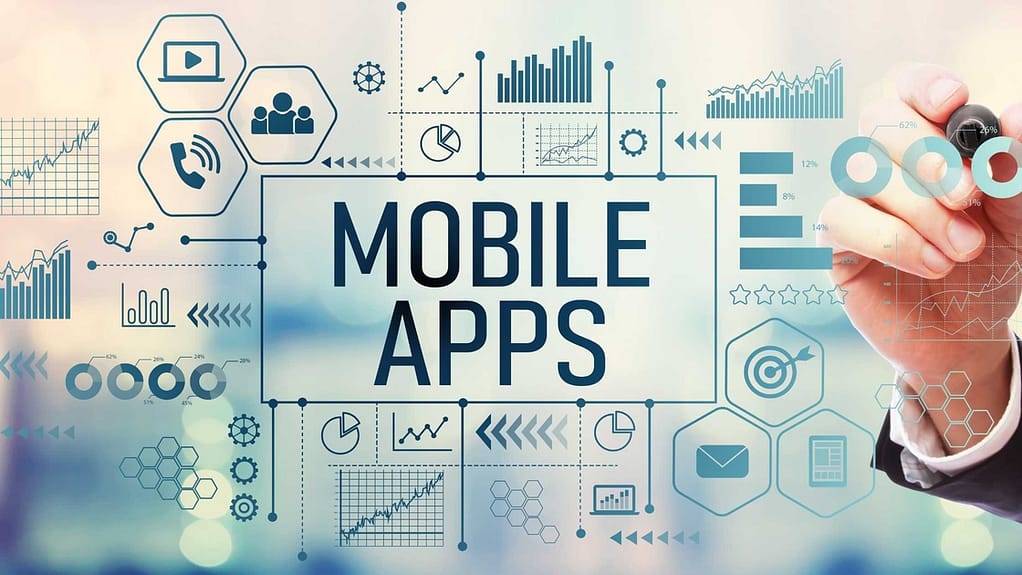Table of Contents
ToggleMobile application (app) development is a rapidly growing industry, with millions of people using mobile apps for a wide range of purposes every day. According to Statista, there are over 6.3 billion smartphone users across the world. In addition, mobile apps are expected to generate over $935 billion in revenue in 2023. It’s no surprise that the mobile app industry is thriving.
With the right strategies, it’s possible to earn passive income from mobile application development. In this blog, we’ll discuss what mobile application development is and how much you can possibly earn. We will also include tips to get started, the skills needed, and the different revenue models.
What is Mobile App Development?
Mobile application development is the process of creating software applications that are designed to run on mobile devices such as smartphones, tablets, and smartwatches. This involves a range of activities, from designing the user interface to coding the app, testing it, and deploying it on app stores.
It requires specialized skills in programming languages and software development tools specific to mobile platforms like iOS and Android. With the increasing popularity of smartphones and tablets, mobile app development has become essential for businesses, individuals, and organizations to reach and engage with their target audience.
How Much You Can Earn in Mobile App Development?
The amount of money you can earn from mobile application development can vary greatly depending on various factors. These are the platform, the complexity of the app, the target audience, the monetization strategy, and the market demand.
Some apps generate millions of dollars in revenue, while others fail to generate any significant amount of income.
If you are an independent mobile app developer, your income will depend on the number of apps you develop. It also depends on the success of those apps, and the amount of revenue you generate from them. Some independent app developers earn six-figure incomes, while others earn much less.
If you work for a mobile app development company, your income will depend on your job title, your experience, and the company’s compensation structure. Entry-level developers may earn around $60,000 to $80,000 per year, while senior developers and project managers can earn six-figure salaries.
In summary, there is no set amount of money you can earn from mobile app development, as it can vary greatly depending on several factors. However, with the right skills, experience, and market demand, it is possible to earn a significant income from developing mobile apps.
Get Started With These Tips
Choose a profitable niche: The first step in developing a mobile app that can earn passive income is to choose a niche that is profitable. This could be a popular game, a productivity tool, or an app that solves a common problem. Research the market to determine what people are looking for, and then create an app that meets that need.
Implement monetization strategies: There are several ways to monetize a mobile app, including in-app purchases, subscriptions, and advertising. Consider which strategy works best for your app and implement it in a way that is user-friendly and not intrusive.
Utilize app stores: App stores like the Apple App Store and Google Play are great platforms for promoting your app and reaching a wider audience. Take advantage of the app store’s marketing tools to increase visibility and attract more users.
Focus on user engagement: User engagement is key to earning passive income from mobile app development. Create an app that is engaging and easy to use, and provide regular updates to keep users coming back. Encourage users to leave reviews and ratings to improve your app’s visibility and credibility.
Partner with other businesses: Partnering with other businesses can be a great way to earn passive income from your mobile app. For example, you could partner with a retailer to offer discounts or deals to users of your app. This not only generates income but also increases user engagement.
Consider creating multiple apps: Creating multiple apps can increase your passive income potential. Once you have established yourself in the app development industry, consider expanding your portfolio by creating more apps that target different niches or solve different problems.
5 Key Skills Needed
Mobile app development requires a range of technical and soft skills, including:
- Programming languages: A solid understanding of programming languages such as Java, Kotlin, Swift, Objective-C, and React Native is essential to create mobile apps.
- User interface (UI) design: Knowledge of UI design principles and the ability to create visually appealing and user-friendly interfaces is crucial to ensure a positive user experience.
- Mobile platform knowledge: Understanding mobile platforms and operating systems, such as Android and iOS, is necessary to develop apps that are compatible with different devices and operating systems.
- Debugging and testing: The ability to identify and fix bugs and test apps thoroughly to ensure they function correctly is essential for successful app development.
- Communication and Continuous learning: Good communication skills are vital for collaborating with other team members, including designers, developers, and project managers, to ensure that the app is developed according to the requirements and specifications. In addition, willingness to keep up with the latest mobile app development trends and technologies to improve your skills and stay competitive in the market.
Mobile App Development Revenue Models
When choosing the ideal monetization strategy for your app, start with a well-known model. You can carry on experimenting with many models as necessary after beginning with a known model.
Let’s first classify all of the models into three groups in order to better comprehend the most popular revenue models.
Free apps: Apps in this category are free and don’t have any in-app purchases. Downloading and using the app are both free.
Partially Free: Currently, this is the most common monetization approach (Freemium). Even though you can download these programs for free, they impose certain functional restrictions. To access all of the functionality of the app, users must pay.
Paid apps: You must pay to download a paid app unless it is available for a free trial. Users must pay to continue using the app once the trial time expires.
Subscription apps: These are often free to download but charge users a monthly or annual fee to utilize their features.
Next, let’s discuss how each payment mechanism might generate revenue for you.
Free apps
Is there something like this? Free apps can indeed make money! In-app advertising, commonly referred to as affiliate marketing, is the way out. Developers who employ this method of monetization are paid when users engage with the in-app advertisements. Keep in mind that a free program needs a lot of downloads to be profitable. The following are some of the most popular affiliate marketing campaigns:
Pay-per-click (CPC): You are charged every time an ad in your app is clicked. However, since there are no clicks, the cost per 1000 is used for calculating the revenue from these ads.
Cost per View (CPW): You can make more money if more people see your advertisement. Video advertising is often used in this kind of campaign.
Cost per installation (CPI): When customers download the promoted program, developers are compensated.
The primary advantage of free app monetization strategies is the selection of ad formats. It let you choose the one that best meets your requirements. First, based on the factors that are most important to you, such as cost and degree of user involvement, you can select your ad format. Only one problem comes with this strategy. Advertising involves regular evaluation and analysis, and its format and placement vary more frequently than other monetization methods because of this.
Partially free apps
If you don’t like the concept of utilizing adverts in your app and prefer to let users discover content before charging them, the freemium monetization model is an excellent alternative. The freemium business model involves making in-app purchases or subscriptions. This app can sell extras like game lives, cryptocurrency, options to remove adverts, premium content, and more.
There are some drawbacks to this monetization plan to be aware of. According to certain research, the majority of app users opt to just use the app’s free content rather than make in-app purchases. If you want to offer your visitors something that has real worth, don’t be hesitant to employ this model.
By doing this, you can win their loyalty and convert them into paying clients. In this instance, we think that offering a trial period is the ideal method to demonstrate to customers all the advantages of the software. You can demonstrate the value of your offering by doing this.
Paid apps
Paid mobile apps are mobile applications that require users to pay an upfront fee to download and use them. Unlike free apps, these have a one-time cost to unlock all of their features and content.
Examples of paid mobile apps include Microsoft Office, a bundle of office applications. Other examples include mobile games like Minecraft, which offer a premium experience without the need for in-app purchases.
Paid mobile apps can be a good option for users who want to avoid in-app purchases or ads. This is also good for developers who want to generate revenue upfront. However, it’s important for users to carefully consider the cost of the app and whether it offers enough value to justify the price. Additionally, developers need to ensure that their app provides enough value to users to make the upfront cost worthwhile and competitive in the market.
Subscription apps
Subscription mobile apps are mobile applications that require users to pay a subscription to access their services. These apps often provide exclusive content, ad-free experiences, or premium features in exchange for the subscription fee.
Examples of subscription mobile apps include streaming services like Netflix, Spotify, and Apple Music. Other examples include fitness apps like Peloton and Fitbit, which offer personalized workout plans and coaching.
Subscription mobile apps provide a recurring revenue stream for developers and offer users a more personalized and premium experience. However, it is important for users to carefully consider the value and cost before committing to a long-term payment plan.
Final Thoughts
In conclusion, earning passive income from mobile application development is possible if you choose a profitable niche, implement effective monetization strategies, utilize app stores, focus on user engagement, partner with other businesses, and consider creating multiple apps. With the right strategies, you can create an app that generates income while you focus on other aspects of your life.


